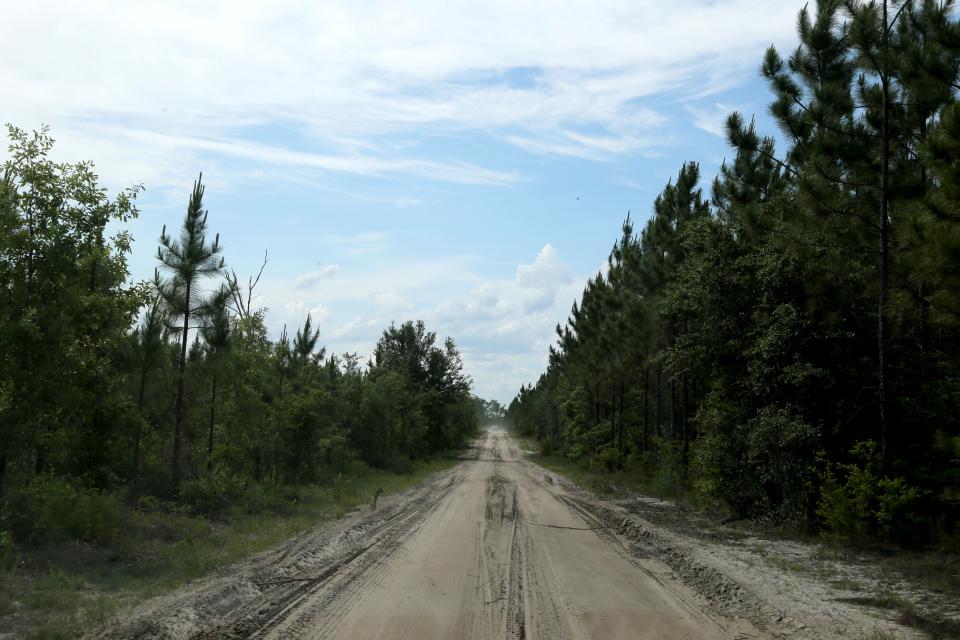Bracing for Hyundai's impact: What 8,100 jobs paying $20-plus per hour means for Savannah
This commentary was written by Opinion columnist Adam Van Brimmer.
“Transformative” is the new buzzword in Savannah, at least as it pertains to the Hyundai EV and battery factories coming to Bryan County.
The scale of this project, announced May 20, and what it will mean for the Savannah-area’s economy, labor force, land use and quality of life is hard to wrap your head around.
Right now, the site that will one day be home to a 16 million-square-foot manufacturing campus is a woods behind a truck weigh station. Development currently consists of dirt roads and hunting stands.
For subscribers: Behind the deal bringing Hyundai Motors to Bryan County megasite for auto plant
Hyundai is coming to Bryan County: Here's how the region prepares for state's largest project.
It’s easy to fly by at 80 mph on Interstate 16 and think, “This place is going to transform Savannah? Come on …”
Yes it will. And the aesthetics of the site isn’t the only aspect of the project that stretches the imagination. Consider the numbers.

Is 8,100 jobs a lot?
Hyundai projects employing 8,100 workers at the auto assembly plant and battery factory. That’s more - significantly more - than the company’s two other nearby facilities combined.
The Hyundai plant in Montgomery, Alabama, has a 3,000-person staff; the West Point, Georgia assembly facility operated by its sister company, Kia, employs 2,700. Both run three shifts and produce cars 24 hours a day.
Savannahians have been comparing the Hyundai labor force projections to other local major employers, such as Gulfstream. The business jet manufacturer’s workforce hovers near 10,000 here in Savannah today. But when Grumman moved its Gulfstream division from Long Island to Savannah in 1967, the initial hiring push was for 100 employees.
Another comparison is the Georgia Ports Authority. The GPA employs around 1,500. Add in the longshoremen who work the docks, and the workforce surpasses 2,000.
Hyundai’s 8,100-employee projection is for direct hires — it doesn’t include those who will work for the manufacturing facility’s many suppliers. Suppliers for Kia’s West Point plant employ another 12,000 in the vicinity, according to West Point-area officials.
How will Hyundai jobs change Savannah?
To understand how Hyundai has changed the personal finances of those working in the automaker’s Montgomery, Alabama factory, look no further than the facility’s parking lot.
When the assembly plant opened in December 2005, the first employees drove a mix of “beaters” to work, said Chris Smith, a corporate attorney who works at the factory. Within months, several of the jalopies had been scrapped in favor of late model cars, as thousands of blue collar workers got a taste of financial security.
Such prosperity is nothing new in Savannah, a town with many jobs that don’t require a college degree. Show up on time, demonstrate a good work ethic and display a positive attitude, and you can make decent wages.
Hyundai promises to raise that bar. The average wage is projected at $58,000 a year, or $28 an hour. On the production line, the salary is likely to fall below that mark, at least to start.
Hyundai’s sister company, Kia, lists pay for assembly workers starting at $17.25 an hour and topping out at $26.40 an hour for its West Point, Georgia. Hyundai’s Montgomery production folks make closer to $25 per hour, according to salary website, Zippia. Rivian pays entry level workers $20 an hour to work its EV production line in Normal, Illinois.
Former President Barack Obama had it right when he said the cure for poverty is jobs, and lots of them. Hyundai may be that panacea.
What is the cost of thousands of good-paying jobs?
Not so long ago, the Georgia Department of Transportation’s cutting of tens of thousands of trees along Interstate 16 caused a deafening uproar.
Opinion: Savannah Tree Foundation works to fix tragedy on I-16
With Hyundai’s arrival, we need to accept the following reality in advance: The 46-mile stretch of I-16 between the Chatham Parkway exit and the U.S. 301 exit near Statesboro is going to lose its natural scenic aesthetic.
The corridor is already trending that way, whether it’s warehousing in Chatham County, industrial parks in Bryan and Effingham or land being cleared for development in Bulloch. Residential housing and commercial and retail businesses will fill in. The state will build a new interchange east of the EV factory site.

Economic development leaders make no apologies for this coming transformation. They’ve been open about what the megasite would spawn — dozens of suppliers opening facilities nearby, the need for housing within a 30-minute drive, the retail and services sector demands that go around with it.
Trip Tollison with the Savannah Economic Development Authority said these consequences have been part of his presentation to Rotary Clubs and other community organizations for years.
Hyundai’s “transformative” push has already begun. The timeline for the factory’s opening — January 2025 - is aggressive. Time for all of us in Savannah to get up to speed.
Contact Van Brimmer at avanbrimmer@savannahnow.com and follow him on Twitter @SavannahOpinion.
This article originally appeared on Savannah Morning News: Hyundai EV and battery factories will transform Savannah economy

